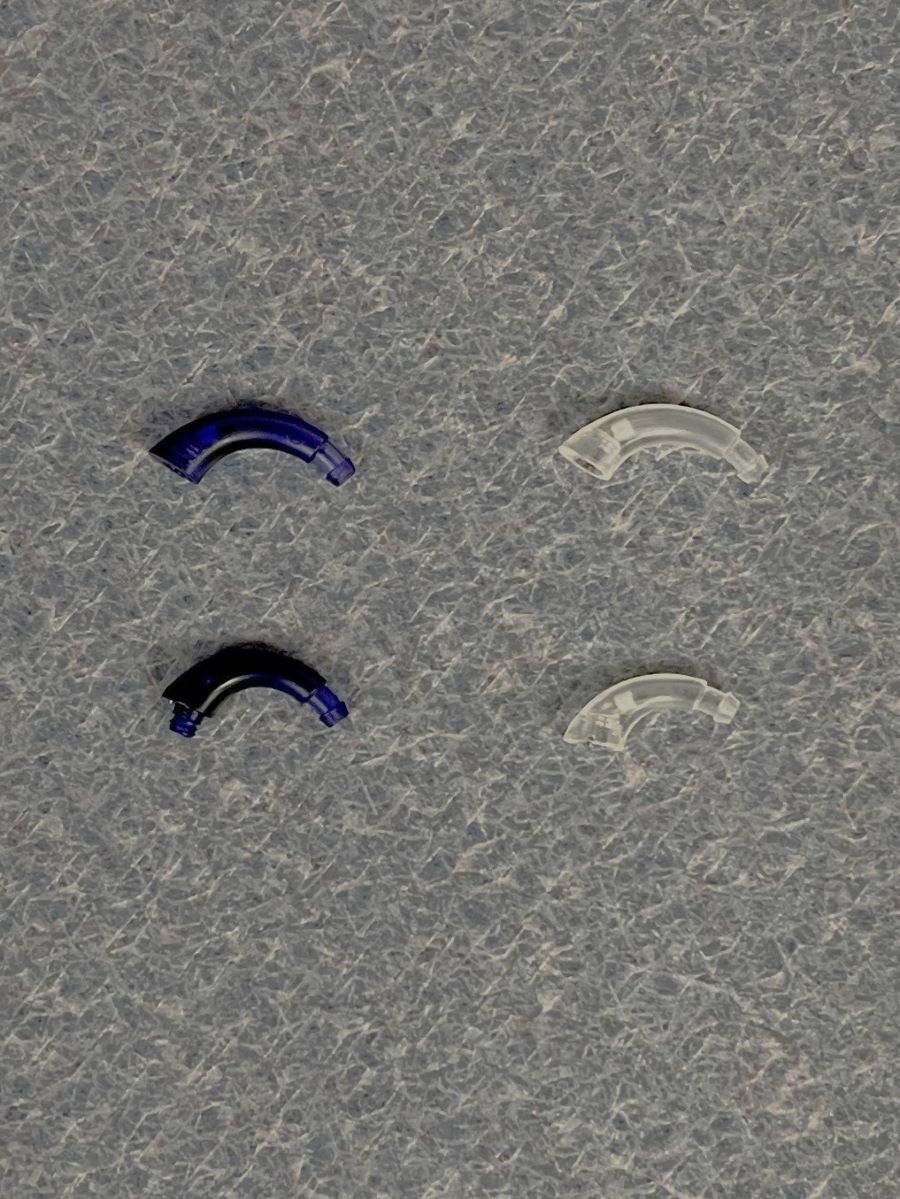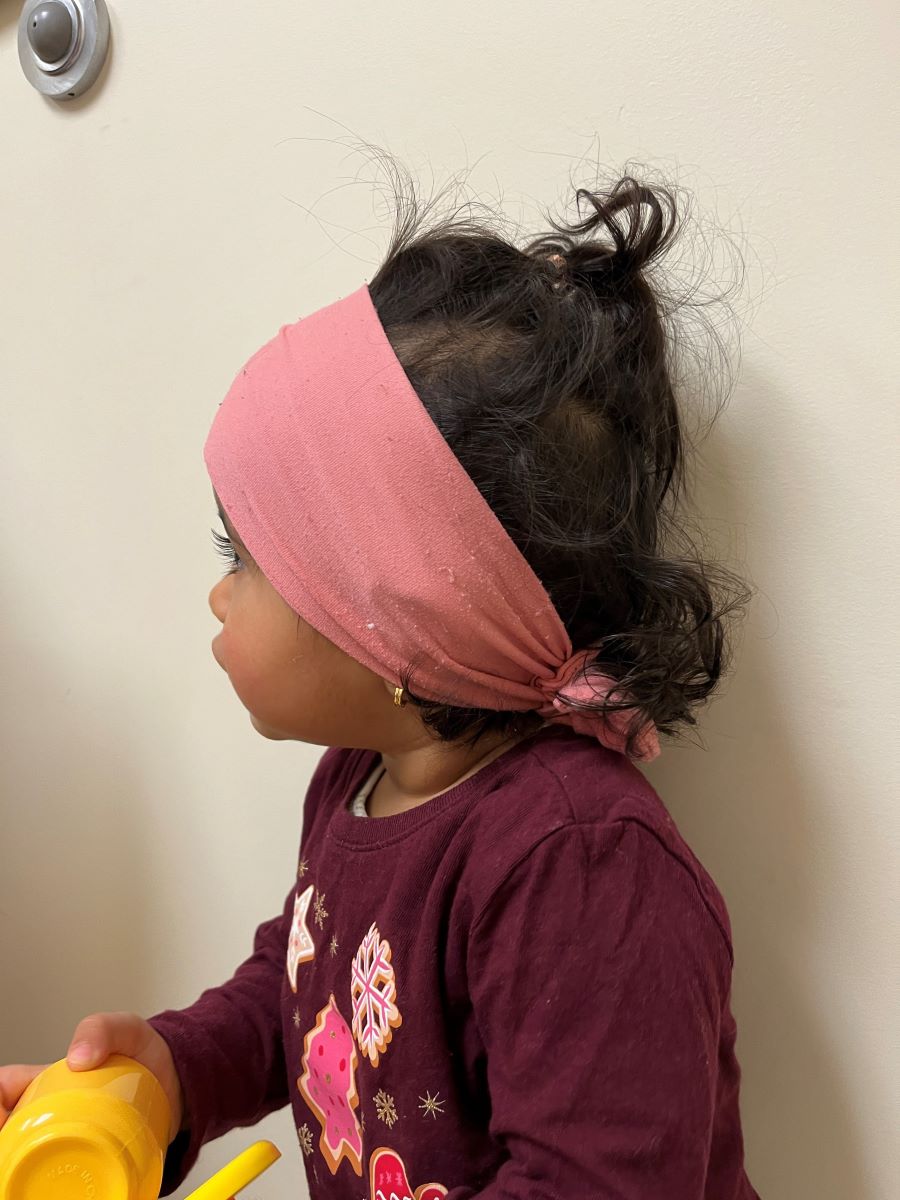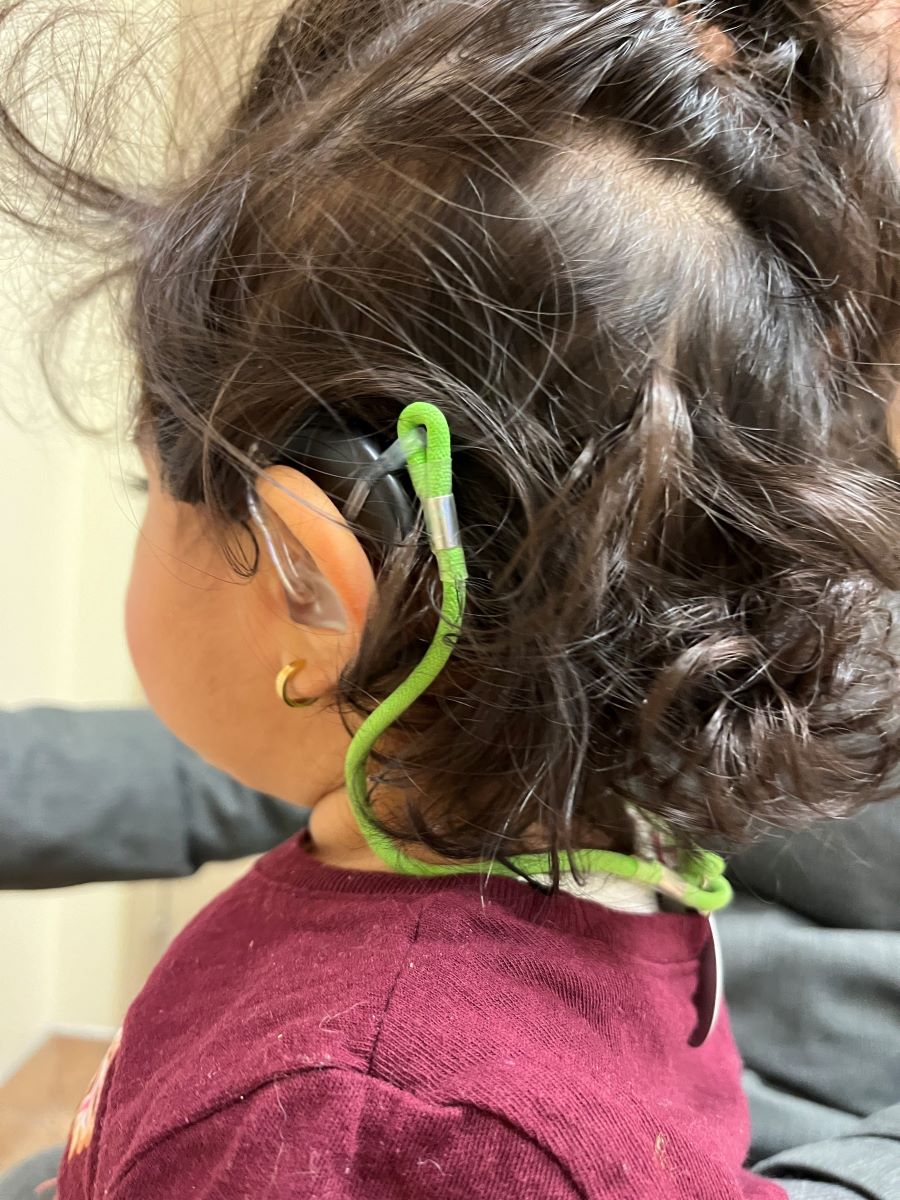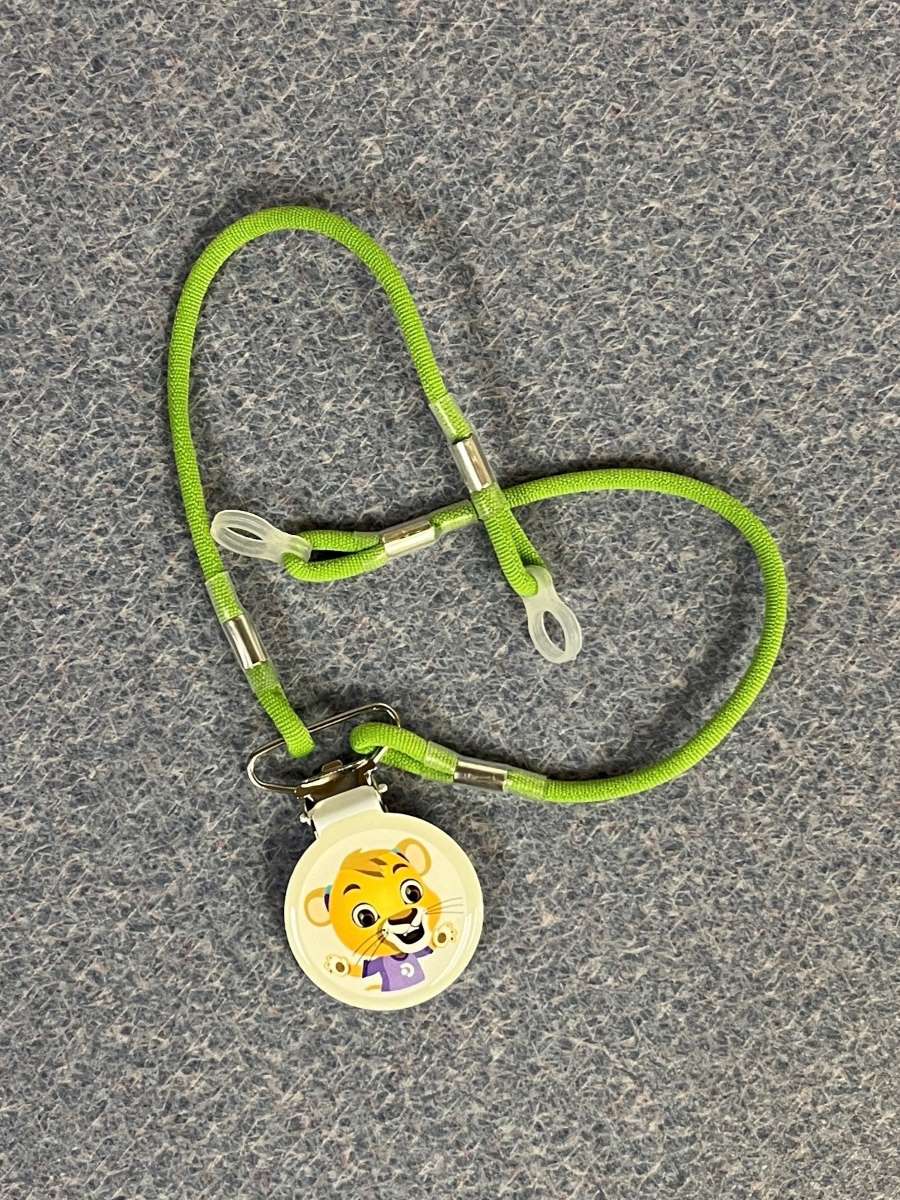Keeping Hearing Technology on Your Child’s Ears
Strategies for parents
Keeping hearing technology like hearing aids and cochlear implants on your baby’s or toddler’s ears can be challenging. But there are strategies and products that can help. These strategies and products can also prevent hearing technology from getting lost.
Earmolds

Earmolds attach to your child’s hearing aid and then fit in their ear. An earmold that fits snugly in the ear helps reduce the chance of the hearing aid falling out of the ear. When the earmold fits snugly, the hearing aid also moves less in your child’s ear. If the hearing aid moves less, your child may be less aware of it and may not reach for it.
The size and shape of the ear canal changes quickly in infants and young children, so you will need to replace their earmolds often. As your child grows, you won’t need to replace their earmolds as often. Learn more about your child’s earmolds and when they need to be replaced.
You can get earmold impressions done and buy earmolds at audiology clinics.
Ear hooks


Ear hooks attach to your child’s hearing aid and then to the earmold. They can also attach to a cochlear implant. When the ear hook has a snug fit on top of the ear, then the hearing technology is less likely to fall off your child’s ear.
Ear hooks come in different sizes to help create a snug fit. You can buy ear hooks at audiology clinics.
Tape
Double-sided skin-safe tape
Double-sided tape attaches to the hearing technology and to your child’s skin to help hold the hearing technology in place. When your child is just starting to use their hands to explore, tape can help deter them from pulling the hearing technology off.
Some examples of double-sided skin-safe tape include wig tape, toupee tape, bra tape, and Phonak Stick n’ Stay sticker pads. You can buy double-sided skin-safe tape at pharmacies, beauty supply stores, online stores, and at audiology clinics.
Single-sided skin-safe tape (nasogastric tube tape)
For newborns and infants, you can put nasogastric (NG) tube tape over the hearing technology to help hold it in place. Do not cover the microphones with the tape. You can buy single-sided skin-safe tape at pharmacies.
Headwear (caps and headbands)


Caps and headbands that fit over a child’s head and hearing technology are effective at discouraging young children from pulling their hearing technology off. Headwear is washable and durable. Examples of headwear to help keep hearing technology on your child’s ears include a pilot cap, bonnet, hat, headband, bandana, hairband, and ear suspenders. You can buy this type of headwear online and in clothing stores.
Stop using caps and headbands after your child stops trying to pull at their hearing technology or when your child is ready to start practicing putting on their own hearing aids.
Clips and cords


Clips and cords help prevent hearing technology from getting lost when your child removes them from their ears. Retention cords, for example, clip onto the hearing technology and onto your child’s clothing. Examples of clips and cords include hair clips, SafeNSound Barrettz, OtoClips, Critter Clips, and SafeLine Retention Cords. You can buy clips and cords online and at audiology clinics.
To see this information online and learn more, visit MyHealth.Alberta.ca/health/aftercareinformation/pages/conditions.aspx?hwid=custom.ab_hearing_tech_keeping_on_child_inst.

Related to Hearing Technology for Children
For 24/7 nurse advice and general health information call Health Link at 811.
Current as of: February 22, 2024
Author: Provincial Audiology Professional Practice, Alberta Health Services
This material is not a substitute for the advice of a qualified health professional. This material is intended for general information only and is provided on an "as is", "where is" basis. Although reasonable efforts were made to confirm the accuracy of the information, Alberta Health Services does not make any representation or warranty, express, implied or statutory, as to the accuracy, reliability, completeness, applicability or fitness for a particular purpose of such information. Alberta Health Services expressly disclaims all liability for the use of these materials, and for any claims, actions, demands or suits arising from such use.
